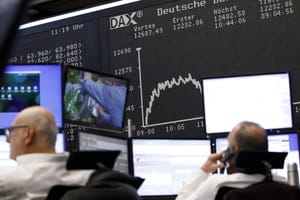
The Dow Jones Industrial Average saw another record decline yesterday, closing while down 1,175 points. While it’s technically the largest single-day decline measured in points, that’s only the case because of the massive size of the Dow today. The selloff amounted to a 4.6 percent decline on the day, which is hardly close to being the largest in history.
Despite the record point decline yesterday, it came after a series of market records were broken, including the longest bull-run in history, and the least volatile market in decades. Volatility returned yesterday, as it had to, and it’s already looking like today will be another down day.
I imagine most of the same liberals who attributed the stock market gains under Trump to Obama will blame this decline on Trump, even though declines of this magnitude (in terms of percentage decline) were more common under Obama than under Trump.
And keep some perspective in mind: Below is the Dow Jones charted over the past 5 years, with its 50-day moving average in purple. Despite the recent selloff, you can still draw a line straight upward from the day Trump was elected to the presidency to today on the chart.

As for the reason for this selloff? That really depends on what source you ask – and you’re guaranteed to find a dozen different explanations. The truth is, nobody really knows, but there are a few possibilities that come to mind:
- The market rally was simply overextended and overdue for a selloff. People were taking profits as the market hit record highs.
- The yield on the 10-year Treasury note hit a 4-year high of 2.85 percent on Friday. Other bond market yields also surged. Since bonds are safer than stocks, higher bond yields can lure money away from stocks into bonds.
- General investor anxiety about a change in leadership at the Federal Reserve.
- The market usually declines in February in post-election years.

Nobody knows for sure why they declined, but the markets would have to fall nearly 40 percent to be back where they were on Election Day.
Share this story with others now!
